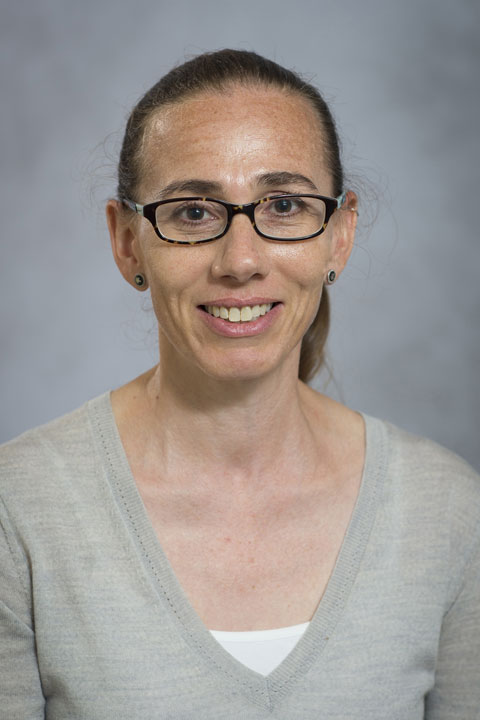A pediatric hematologist/oncologist explains blood vessel abnormalities.

At first, it may not look like much—perhaps a pinkish discoloration on a newborn’s skin or perhaps nothing noticeable at all. “But over a period of weeks, there can be rapid growth of a well-defined skin mass that’s often bright red and lumpy or rough,” says Nicole Mallory, MD, a pediatric hematologist/oncologist at Monmouth Medical Center (MMC) and Rutgers Cancer Institute of New Jersey, the state’s only NCI-Designated Comprehensive Cancer Center.
Dr. Mallory is describing infantile hemangiomas, popularly known as birthmarks. They appear when blood vessels in the skin form incorrectly, creating what’s broadly known as a vascular malformation. “Hemangiomas are the most common of these structural abnormalities,” Dr. Mallory says. Due to their abnormal, rapid growth, hemangiomas are considered tumors. “Often, people think they’re something serious,” Dr. Mallory says. “They are actually benign. But we always look closely at any tumor to be sure it truly is benign and treat it differently if it isn’t.”
Common Link
As a pediatric hematologist/oncologist, Dr. Mallory assesses and treats a wide variety of blood-related conditions. These include anemia, clotting and bleeding disorders, varying forms of blood and tissue cancers and a range of blood vessel malformations.
Symptoms of blood-related conditions can range so widely that pediatricians sometimes are not sure what kind of specialist might be needed. “A hematologic condition could present as a skin problem, a musculoskeletal issue, something in the brain causing neurologic symptoms or bleeding or clotting problems,” Dr. Mallory says. “Follow-up might be managed by specialists such as dermatologists, neurologists or vascular surgeons.”

Research has boosted understanding that many symptoms share a link to blood or blood vessel abnormalities. “Now it’s more common for a child to be referred to a hematologist/oncologist working with an interdisciplinary team,” says Dr. Mallory, who collaborates closely with pediatric hematologist/oncologist Susan Murphy, MD, at Robert Wood Johnson University Hospital in New Brunswick and Rutgers Cancer Institute of New Jersey. “There’s been an explosion of awareness in the last five to 10 years that these patients should have cohesive care.”
Benign infantile hemangiomas often shrink or resolve on their own. “But some pose a risk of disfigurement or functional impairment that might warrant treatment,” Dr. Mallory says. One option is a beta blocker medication that inhibits tumor growth. Another is sclerotherapy, which slows growth by sealing off blood vessels. In some cases, a plastic surgeon may be called upon to minimize discoloration or loose skin. “Physical abnormalities and medical care can be challenging for children, so we also have support services such as social workers and child life specialists available for our families,” Dr. Mallory says.
If a tumor turns out to be a malignancy instead of a benign infantile hemangioma, treatment shifts toward oncology and a cadre of advanced treatment options. These may include chemotherapy or targeted therapies designed to zero in on a specific biological feature of a cancer such as a particular receptor.
Comprehensive hematology/oncology care provides targeted therapy as an option for slowing the growth of benign hemangiomas as well. “Families often think they have to go to some faraway place to manage these conditions,” Dr. Mallory says. “But they can stay close to home for their care. Through our partnership with Rutgers Cancer Institute, we provide patients with the most advanced treatment options, including clinical trials, right in our community.”
To learn more about pediatric hematology/oncology at The Unterberg Children's Hospital at Monmouth Medical Center, call the Valerie Fund Children’s Center at 732-923-7455.
